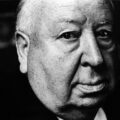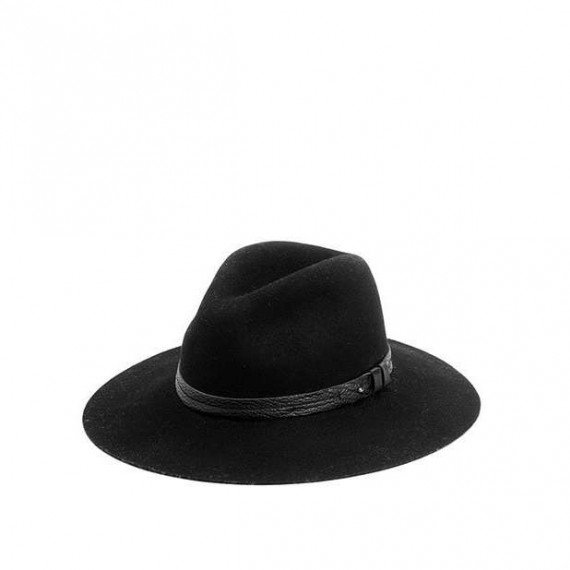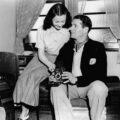Teddy Boys – Vintage Style icons
January 4, 2017After the Second World War, fashion has gone through many changes. These were times of great austerity and everyone was ready to embrace a bit of luxury and leave behind the make do and mend mentality, at least for a little bit. With advances in mass production technology good quality, clothes were now available to the expanding middle classes. There was a resurgence in haute couture after the years of war-time austerity and now fashionable styles filtered from big design houses were reproduced on a wider scale in ready to wear form for mass consumption. At this time the beginnings of a new and influential style period for men took shape. The fashion era was called Teddy Boys style.
Seeking individualism
For the first time teenagers became a fashion force unto themselves. Previously teenage styles would not have differed greatly from that of their parents. Now they were carving out a style of their own. These teenagers were greatly influenced by music such as rock and roll, jazz and skiffle as well as being influenced by their American counterparts. With this embracing of a unique style they created their own subculture, Teddy Boys.
Teddy Boys were highly influenced by the Edwardian styles worn by dandies in the early years of the 20th century. Styles which where at that time only a few decades old and would have been worn by their parents or grandparents. The Daily Express coined the term ‘Teddy’ when a headline shortened Edward to Teddy in reference to the youth movement.
Teddy Boys history
With riots breaking out in various towns across the country after US film Blackboard Jungle was first shown. Teddy Boys found themselves at the centre of the conflict. Many Teddy Boys formed gangs and clashes with rival gangs followed, some of which were race related. The media often exaggerated these clashes and they found themselves at the centre of a lot of negative press. The subculture came from a primarily working class place, the teens worked in factories or offices and with this look they were rejecting post war austerity and their spare time was spent buying or customizing their clothes. The clothes were often bought at great expense and paid for in weekly instalments.
Teddy Boy style
As with most subcultures there was an associated uniform. The boys wore; drape jackets often with a velvet collar, tapered and drainpipe style trousers. These ended at the ankle to expose the socks, slim or bootlace ties. Brocade waistcoats, chunky brogues or brothel creepers were also worn and the hair was heavily styled into a quiff. Teddy girls wore tailored velvet collar jackets with pencil or hobble skirts, rolled up jeans, straw boaters and espadrilles. Later they were influenced by American styles such as circle skirts and ponytails.
Many of these styles are seen on the catwalk today, there is often a resurgence of the Teddy Boy style and designers are always looking to this era for inspiration. Today items such as brogues, pencil skirts and velvet collars are common features in everyday outfits. Other items enjoy a fashion moment such as brothel creepers which have recently become a common sight on the high street.
Style transitions
The Teddy Boy style, mixed with a heavy dose of beatnik morphed into what is commonly known as Mod style during the sixties. Much of the mentality and the youth orientated aspects of the Teddy Boy translated to the Mod aesthetic but the look was much more streamlined, minimalist and modern. Black culture and the Jamaican Rude Boy heavily influenced mods and as such they enjoyed listening to African-American soul, R&B and ska music.
Teddy Boys influence
The Teddy Boys paved the way for the social acceptability of a male interest in fashion. Some of the key features of the Mod look include, Chelsea boots, winkle pickers, suits with narrow lapels, thin ties, cashmere jumpers and button-down collar shirts. Female Mods worn masculine style clothing and short haircuts and pushed moral boundaries with their mini skirts. Twiggy and Jean Shrimpton were icons of the Mod era.
These subcultures started to decline in the late sixties as the clothing styles were being adopted by big design houses and high fashion brands instead of coming from the street. The filtering down of these styles damaged somewhat the mentality and the values of the Mod crowd so among the hardcore Mods at least, the style started to wain.
Vintage influencing modern design
In recent years Teddy Boys style has inspired some great modern designer collections. In autumn/winter 2014 we saw a revival of this iconic style. Designers such as Saint Laurent and Songzio featured drape jackets reminiscent of this bygone era. Skinny or drainpipe trousers were also a big hit on the catwalks of Lanvin and Watanabe. Other fashion designers took on the full aesthetic with Ports 1961 and John Lawrence Sullivan showcasing this spectacular vintage look.









